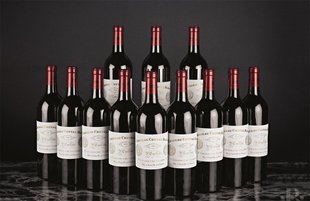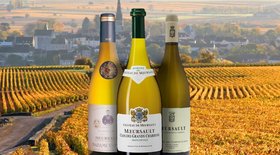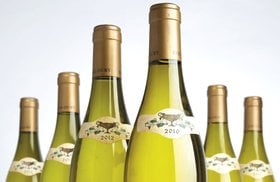Château Cheval Blanc (Winemaking, Best Wines, Prices 2025)
Keen to discover all about Chateau Cheval Blanc wine before adding one to your wine collection?
Chateau Cheval Blanc is the most sought-after wine estate in the St Emilion appellation of France. With its Premier Grand Cru Classe (A) status and Cabernet Franc and Merlot blends, the winery has built its own distinct identity and fan following.
What makes their wines so unique? How are they made?
This article explores everything about Chateau Cheval Blanc - its colorful history, magnificent vineyards, and unique winemaking techniques. We’ve also curated a list of The Best Chateau Cheval Blanc Wines To Invest In 2024.
What’s more? Find out A Hassle-Free Way To Invest In These Fine Wines!
Further reading
- Want to invest in fine wines? Here’s The Ultimate Guide To Investing In Wine.
- Dive into the world of the delectable Beaujolais Wines. Or check out this fascinating guide to the Astounding Grenache Wine.
A Quick Intro To Château Cheval Blanc
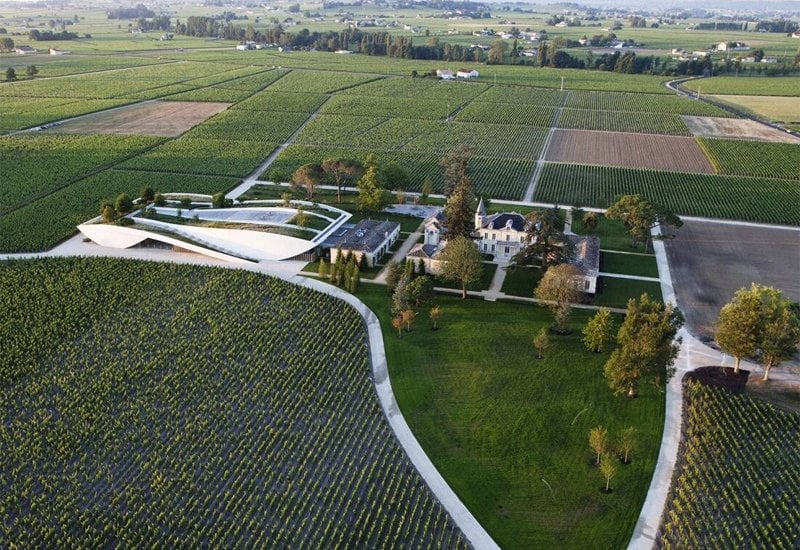
Chateau Cheval Blanc (meaning “The White Horse Castle”) is situated in the Right Bank of Bordeaux and borders the Pomerol appellation.
No wonder you find the plush opulence of Pomerol wines and the richness of Emilion wines in Cheval Blanc!
The wine estate consists of 45 different plots each with a unique soil type - the reason they’re treated like separate vineyards. The distinct soils and exceptional winemaking techniques are the real secrets behind the Chateau’s outstanding wines.
Also read: A red wine lover? Explore the Fruity Barbera Wine and Intense Malbec Wine.
Let’s see how it all began!
A Brief History of Chateau Cheval Blanc
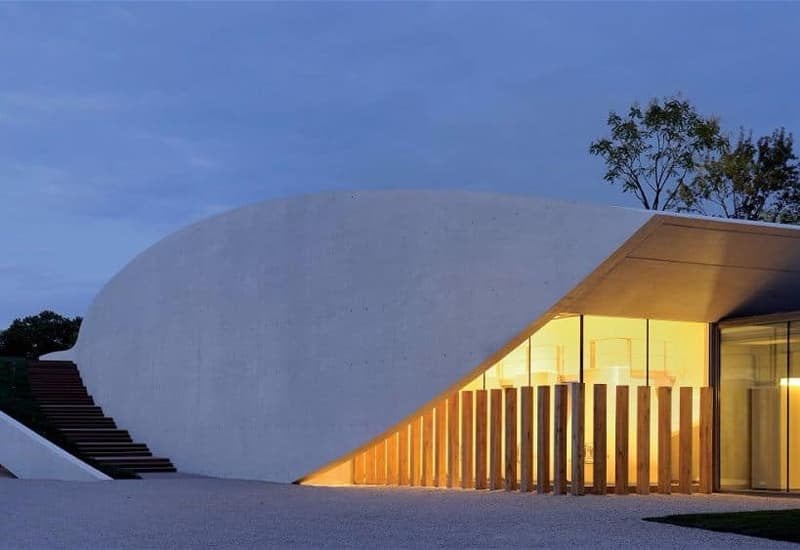
Cheval Blanc has a long and elaborate history that dates back to the 4th century.
In 1832, Jean-Jacques Ducasse, President of the Libourne Trade Tribunal, purchased a number of Château Figeac plots in 1832 and created a 39 hectares vineyard plot.
Henriette, Ducasse’s daughter, inherited this fertile vineyard.
It was Henriette’s husband, Jean Laussac-Fourcaud (a wine merchant), who gave Cheval Blanc its own identity. He expanded the vineyard and built a water drainage system to practice water stress.
His wines were so successful that he finally left the shadows of Chateau Figeac and renamed his wine from “Vin de Figeac” to “Cheval Blanc” in 1852.
Jean’s son further installed twelve wooden vats and selected the best old vines for reproduction.
Cheval Blanc was one of the first wineries to gain Premier Grand Cru Classé “A” status (in the Classification of Saint-Emilion wine) in 1954 - along with Château Angélus, Château Ausone, and Château Pavie.
In 1998, Bernard Arnault and Baron Albert Frère (the chairman of LVMH Moët Hennessy Louis Vuitton) bought the Cheval Blanc estate.
They renovated the estate and invested in a new winery, barrel cellars, vinification room, tasting area, beautifully landscaped gardens, and expanded the vineyard plots.
Today, the wine estate is guided by Pierre Lurton, the winemaker who also manages the Chateau d’Yquem estate.
Read more: Explore The World Of Champagne in this comprehensive article. Also, find The Perfect Glass to serve it!
Chateau Cheval Blanc: Vineyards And Viticulture
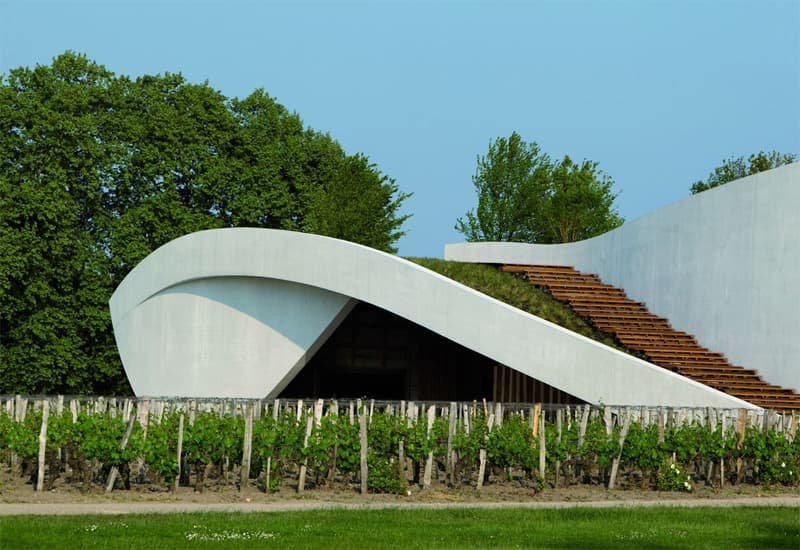
Some of the Cabernet Franc vines in the 39-hectare vineyard are almost 100 years old.
In general, Cheval Blanc vineyard has three main soil types:
- Fine-textured clay soils
- Coarse textured gravel
- Large gravel with sand
The Cheval Blanc vineyards are planted mostly with Cabernet Franc, Merlot, five Cabernet Sauvignon grape varieties, and some Malbec vines.
The grapes from the clayey soil produce wines with velvety tannin, while the wines made from the fruit of gravel soils are more aromatic and elegant.
Vine training, water stress, pruning, and plowing are some of the viticultural techniques used at Chateau Cheval Blanc. Also, they do not harvest all the grapes at the same ripeness giving the wine complexity and depth.
Also read: Take a virtual trip through The Magnificent Chianti Wine Region! For an easy-drinking wine, check out the delicious Barbera d’Asti.
Let’s see how Cheval Blanc wines are made.
Winemaking At Château Cheval Blanc
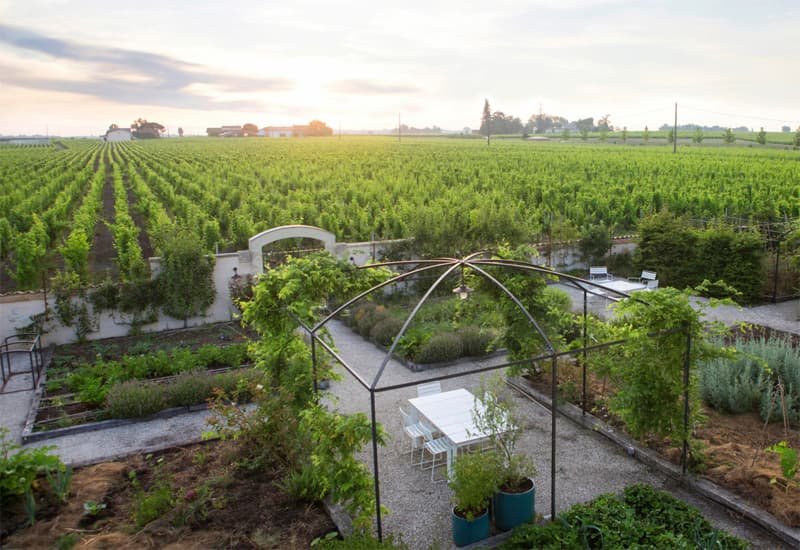
The grapes are separated according to their ripeness levels. Then, each batch goes through the following steps:
- The grapes are destemmed and any green, pink, or shriveled fruits are removed. The remaining 5% of the grapes are sent for crushing.
- The crushed grapes are fermented for 12 hours in fermentation vats. Carbon dioxide is released during fermentation, which pushes the grape skins to the top of the vat and forms a cap.
- The translucent juice from the bottom of the tank is pumped over the cap to filter through it. This process is what gives the wine its powerful tannins. The juice is left in contact with the skin for several days before it is pumped to another vat, and the marc (the solids) is pressed.
- The pressed wine is then added to barrels and clarified.
- Each wine is fermented again to preserve its taste. Here, sulfur is added to prevent oxidation and get rid of any harmful bacteria.
- After the fermentation is over, the wine spends 16-18 months in barrels where the wine gets its expression and complexity.
Finally, after three months of barreling, the wines from different plots are blended. This elaborate winemaking method is what makes Chateau Cheval Blanc stand out from other top wineries (like Pavie and Yquem.)
Also read: Pick your favorite among these exotic Rose Wines for your next celebration! You could also treat your guests to a perfect Sangria or Mimosa!
Chateau Cheval Blanc Wines
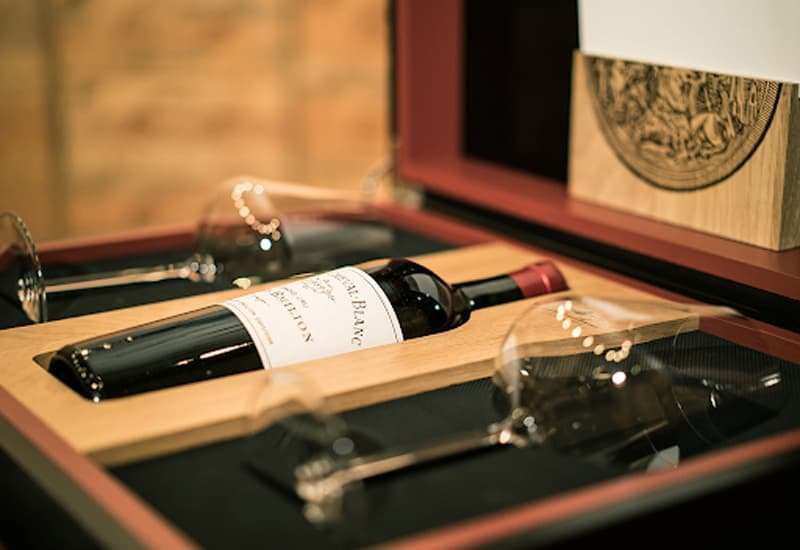
Being one of the most famous wine producers of Rhone Valley, Cheval Blanc produces three wines - each having a unique expression.
- Château Cheval Blanc: A rich red Bordeaux blend wine, the Chateau Cheval Blanc is the winemaker’s most iconic wine. It is known for its aromatic complexity and dense palate.
- Le Petit Cheval: Thisred wine is Cheval Blanc’s second wine and is loved for its red fruit flavors and robust tannins.
- Le Petit Cheval Blanc: One of their recent wines, the ‘Le Petite Cheval Blanc’ is a dry white wine made predominantly from the Sauvignon Blanc grape variety.
Also read: Interested in white wine? Discover aromatic Sauvignon Blancs, delectable Pinot Blancs, and delicious Riesling Wines.
Best Cheval Blanc Wines In 2024 (Including Tasting Notes, Prices)
Here are some of our favorite Chateau Cheval Blanc wines - perfect for drinking or as a wine gift!
1. Chateau Cheval Blanc Vertical Collection, Saint-Emilion Grand Cru
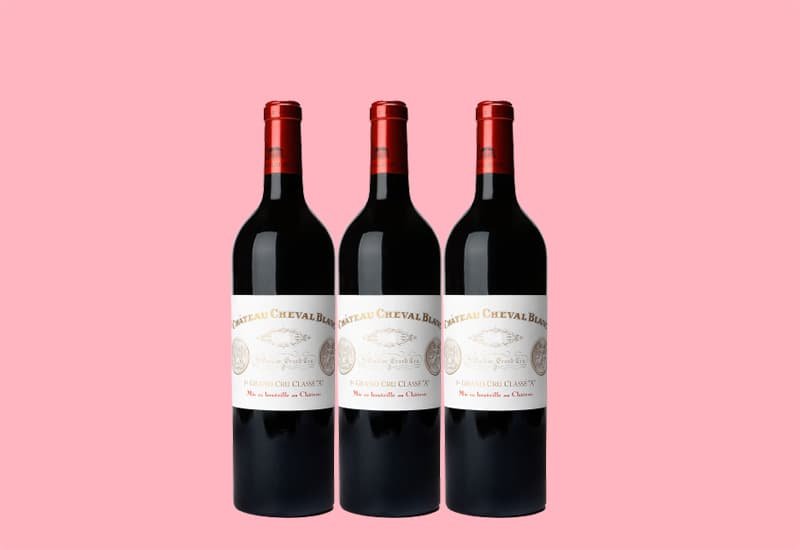
The Chateau Cheval Blanc Vertical Collection consists of one bottle of every vintage from 1945 to 2010 except 1956, 1963, 1965, and 1991 - the years when vintages weren’t produced.
This is your best chance to taste the best of Cheval Blanc!
Price of 1945 Chateau Cheval Blanc Vertical Collection, Saint-Emilion Grand Cru: $131,020
2. 2008 Societe Civile du Cheval Blanc 'Saint-Emilion de Cheval Blanc', Saint-Emilion

A Merlot and Cabernet Franc blend, this great wine from St Emilion appellation showcases the elegance of deep fruit flavors.
Forest floor, Asian plum sauce, black currants, sweet fruit, and Asian spice notes dominate the nose. The palate is medium-bodied with a long fruity finish.
Price of 2008 Societe Civile du Cheval Blanc 'Saint-Emilion de Cheval Blanc', Saint-Emilion: $1,094
3. 1969 Chateau Cheval Blanc, Saint-Emilion Grand Cru
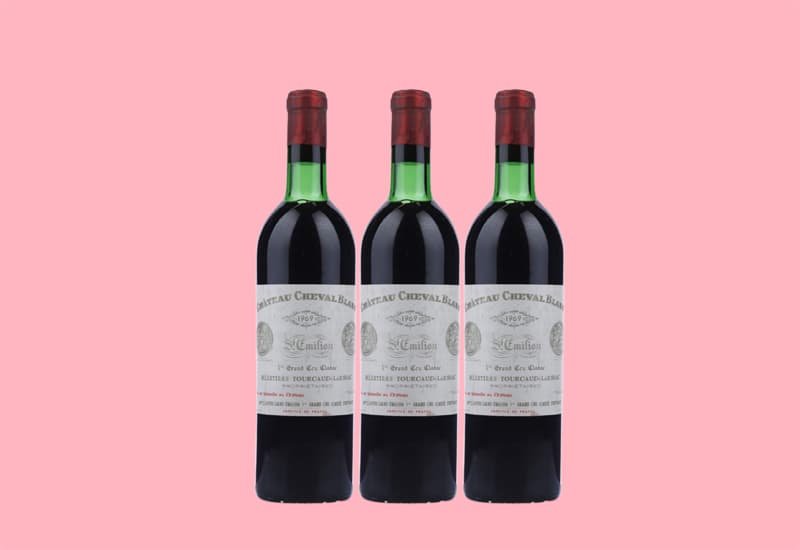
In the glass, this grand vin has a pale garnet color with ruby hues.
The delicate nose gives off a floral and red berry aroma with hints of hazelnuts and tobacco. The palate is balanced and displays spice and plum flavors.
Price of 1969 Chateau Cheval Blanc Vertical Collection, Saint-Emilion Grand Cru: $577
4. 2016 Chateau Cheval Blanc, Saint-Emilion Grand Cru
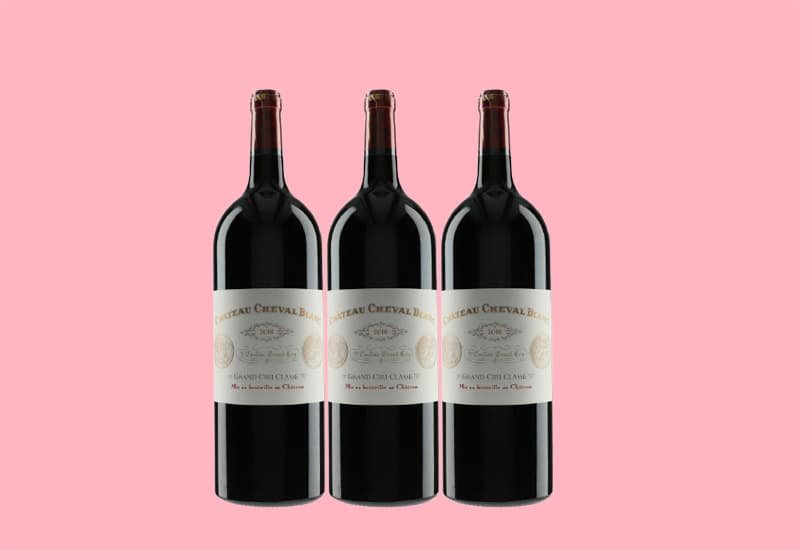
Another grand vin by Château Cheval Blanc, this wine opens to a layered and complex nose with spice, kirsch, earth, black cherry, wet earth, and forest leaves notes. Cabernet Sauvignon gives the wine an elegant finesse.
This wine comes in a magnum format as well, if that’s what you prefer.
Price of 2016 Chateau Cheval Blanc, Saint-Emilion Grand Cru: $916
5. 2018 Chateau Cheval Blanc, Saint-Emilion Grand Cru
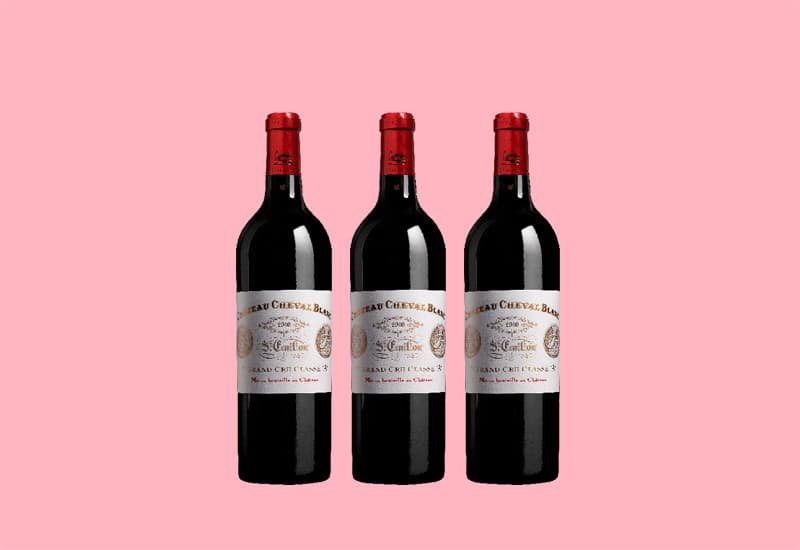
The 2018 Chateau Cheval Blanc vintage has a delicious kick of fruity flavors.
The nose of this red wine opens to black fruit and chocolate aromas with subtle hints of spice. The palate has a complex depth to it with a smooth lingering finish.
Price of 2018 Chateau Cheval Blanc, Saint-Emilion Grand Cru: $789
Also read: Explore the smoky flavors ofDelectable Zinfandel Wine.
6. 2006 Chateau Cheval Blanc 'Le Petit Cheval', Saint-Emilion Grand Cru
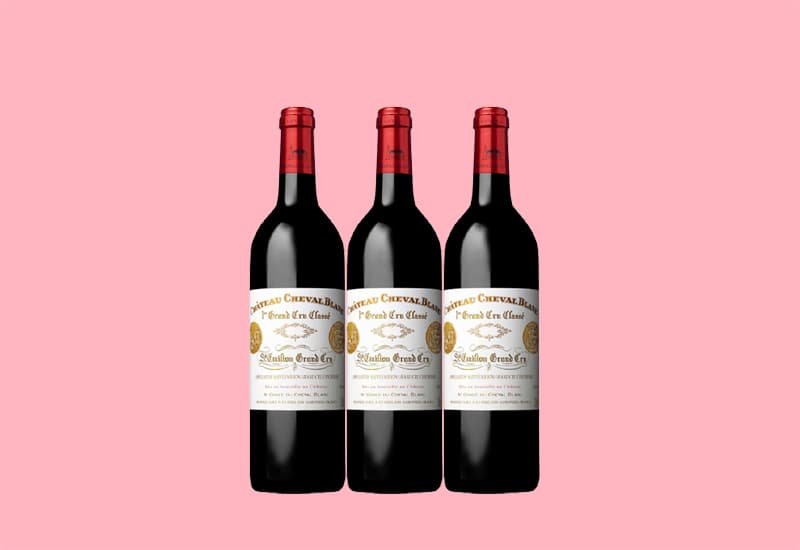
This second wine displays a medium garnet color in the glass.
The nose gives off pure fruit aromas of blueberry, blackberry, and plum with subtle hints of herbs. The palate is full with a well-balanced acidity.
Price of 2006 Château Cheval Blanc 'Le Petit Cheval', Saint-Emilion Grand Cru: $224
7. 2014 Chateau Cheval Blanc 'Le Petit Cheval Blanc' White, Bordeaux

The nose of this white Bordeaux wine opens to layered notes of tropical fruits and herbs. The palate is intense with juicy acidity and wood notes.
Price of 2014 Chateau Cheval Blanc 'Le Petit Cheval Blanc' White, Bordeaux: $245
8. 2015 Chateau Cheval Blanc, Saint-Emilion Grand Cru
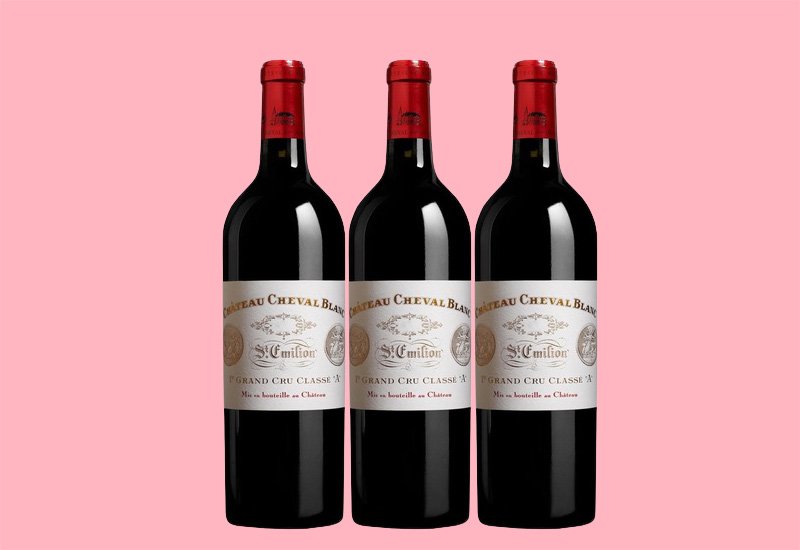
An outstanding wine, the 2015 Chateau Cheval Blanc has pronounced red plum, black cherry, and cassis aromas with hints of licorice, black pepper, and cinnamon. The palate is dry but smooth.
The volatile acidity contrasts with the unctuous texture of the wine.
Price of 2015 Chateau Cheval Blanc, Saint-Emilion Grand Cru: $895
Also read: Uncover the secret behind Chateauneuf-du-Pape’s Rich Wineswith this detailed article!
9. 2011 Chateau Cheval Blanc 'Le Petit Cheval Blanc' White
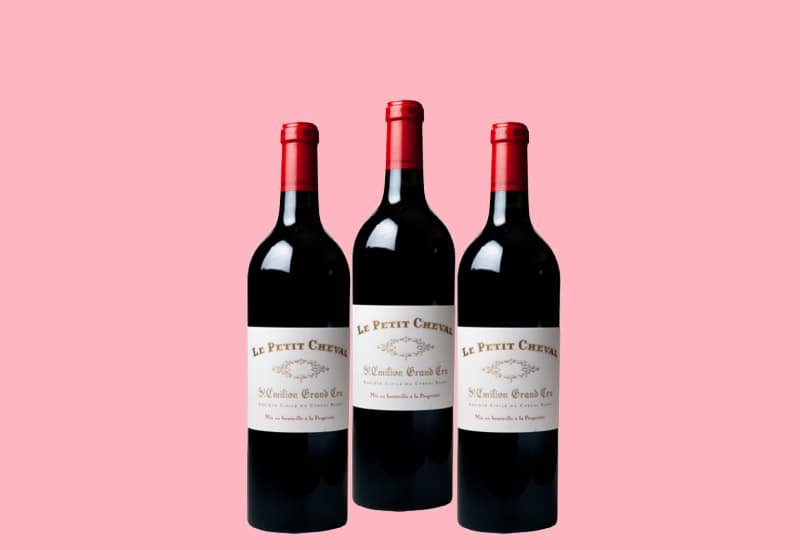
A beautiful garnet-colored wine, the 2011 Le Petit Cheval Blanc is a must-try for white wine lovers. The nose of this Sauvignon Blanc wine gives off rich citrus, apple, and pear aromas. Its volatile acidity levels balance the thick texture of the wine.
Price of 2011 Chateau Cheval Blanc 'Le Petit Cheval Blanc' White: $234
10. 2002 Societe Civile du Cheval Blanc 'Saint-Emilion de Cheval Blanc', Saint-Emilion
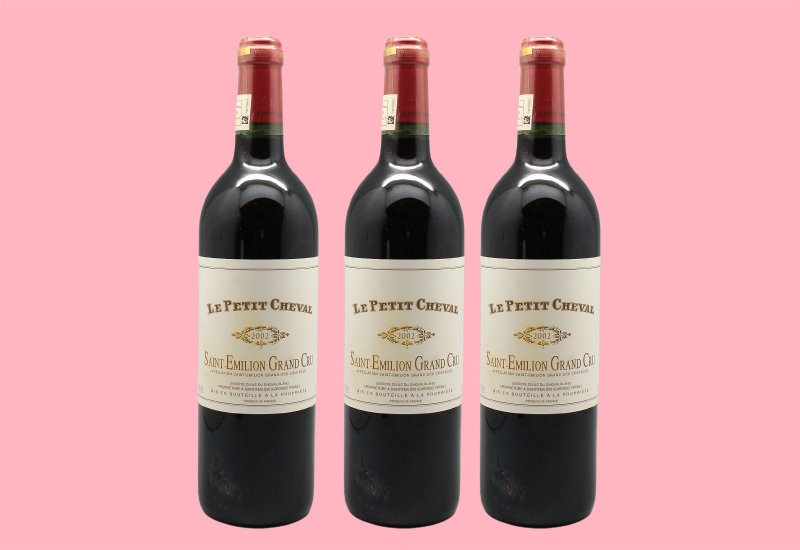
This wine showcases the magnificence of Cheval Blanc’s terroir and the richness of its Merlot and Cabernet Franc grapes.
The nose explodes with floral and blackcurrant notes. The palate showcases powerful tannins and concentrated Cabernet flavors.
Price of 2002 Societe Civile du Cheval Blanc 'Saint-Emilion de Cheval Blanc', Saint-Emilion: $295
Looking for the perfect food pairing for your favorite bottle of Cheval Blanc?
Château Cheval Blanc Wine: Food Pairings And How To Serve It
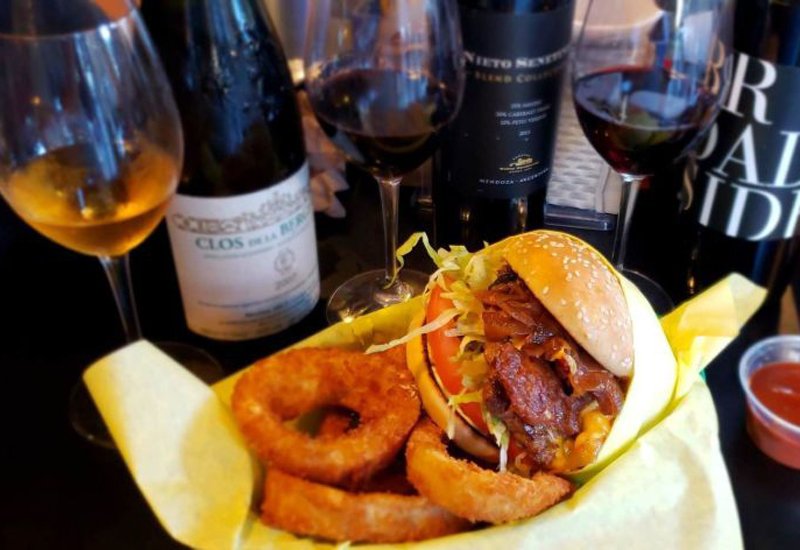
Chateau Cheval Blanc wines are best served with classic meat dishes - roasted, braised, or grilled. These rich wines also make a great pair with tuna, mushroom, and pasta.
Serve your Cheval Blanc at 15.5℃ (60℉) to get the best of its flavors.
If you’re drinking your Chateau Cheval Blanc red young, let it sit in the decanter for 2-4 hours to soften the tannin content.
Investing In Chateau Cheval Blanc Wine
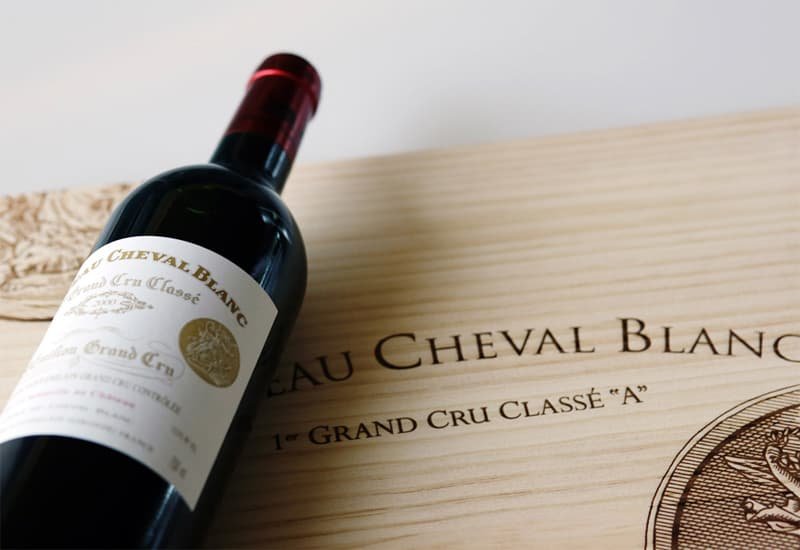
The firm tannins of Chateau Cheval Blanc gives it a good cellar life. Most Chateau Cheval Blancs reach their peak after 15-20 years. Some of their exceptional vintages can also age for around 50 years.
Thanks to its aging potential and an average score of 95+ from top wine critics like Robert Parker, mature Chateau Cheval Blanc wines consistently command high prices in the secondary market.
In the 2010 Christie’s auction, a six-liter bottle of the 1947 Château Cheval Blanc, a 1er grand cru vintage, was sold for $304,375. Robert Parker described it as a “mammoth wine that tasted more like Port than a dry red table wine.”
Their recent wines have also shown commendable price appreciation. The 2015 vintage showed a price increase of 12%, while the 2014 vintage has gone up by 22% since release.
If you’re looking to invest in Chateau Cheval Blanc wines, you should look out for the 2019, 2018, 2017, 2016, 2015, and 2010 vintages.
But how do you find the best Chateau Cheval Blanc wines? Also, how do you avoid the numerous fraudulent bottles flooding the market?
We have the perfect solution!
Buy Cheval Blanc and Other Collectible Wines Through Vinovest
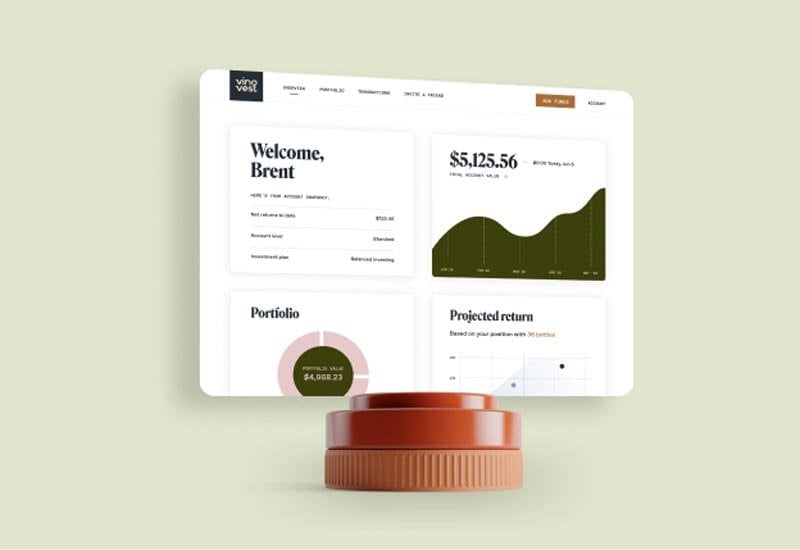
Vinovest is a world-class wine investment firm that helps you buy and sell authenticated collectible wines from across the globe. It not only helps you find the rarest collectibles but also stores them for you, long term!
How Does It Work?
You can start investing with Vinovest with four quick steps.
- Sign up
- Answer a questionnaire to share your risk appetite and investment preferences.
- Add a minimum of $1,000 to your account.
- Start building your wine portfolio!
Benefits
Here’s why you should give Vinovest a chance.
1. AI-Driven Buying and Selling
Vinovest’s AI-driven platform helps you buy and sell your wine from anywhere in the world, with just a few clicks.
2. Best Prices
Vinovest buys your wine directly from wineries, global wine exchanges, and wine auctions, ensuring that you get the best price for your Chateau Lafite and every other wine bottle.
3. Access to a Deep Network
With Vinovest, you get access to a deep wine network of rare wineries, limited edition bottles, and upcoming vineyards, even in lesser-known wine regions.
4. Provenance and Authenticity
Vinovest’s team of sommeliers ensures the provenance of every bottle you buy - be it a St. Emilion or a Pouilly-Fuissé.
5. Optimal and Safe Storage
Every bottle of wine you buy is stored safely under optimal temperature, the right light, humidity, and vibrations.
6. Hassle-Free Delivery
Found the right buyer for your bottle?
Sit back and relax with a Kir Royale or a Champagne Cocktail while Vinovest will get your bottle delivered hassle-free - to you or your buyer!
7. Low Overall Costs
In addition to funding your account, Vinovest charges a minimal fee of 2.8% (2.5% for a portfolio of $50,000 or more.)
This fee includes buying, selling, authentication, storage, and portfolio management. Also, since Vinovest stores your wine in bonded warehouses, you don’t have to pay any VAT or excise duty.
8. Ownership
You own every bottle you buy through Vinovest.
The Magic of Cheval Blanc in Your Portfolio!
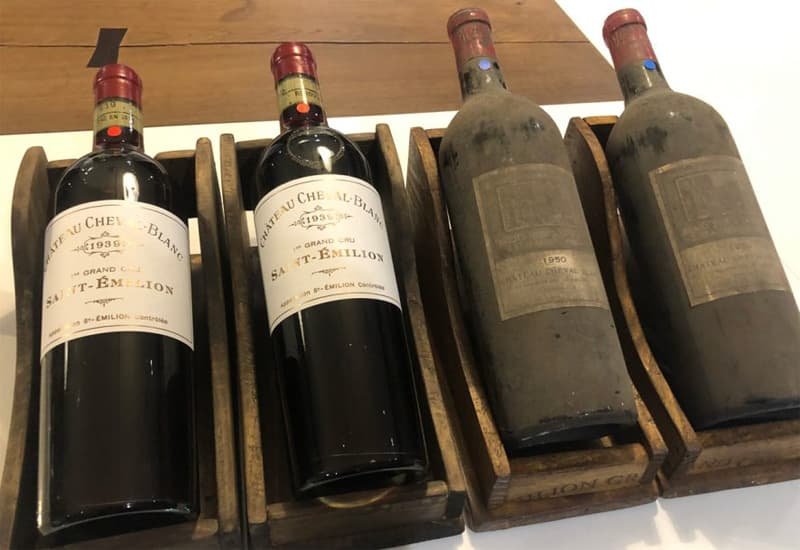
The complex, age-worthy wines of Château Cheval Blanc are perfect for celebrating festive occasions and make excellent additions to your profitable wine collection.
But, let an expert wine investment partner like Vinovest take over the hassles of wine buying, shipping, storage, and selling!
So, simply sign upand embark on an exciting wine investment journey now!
